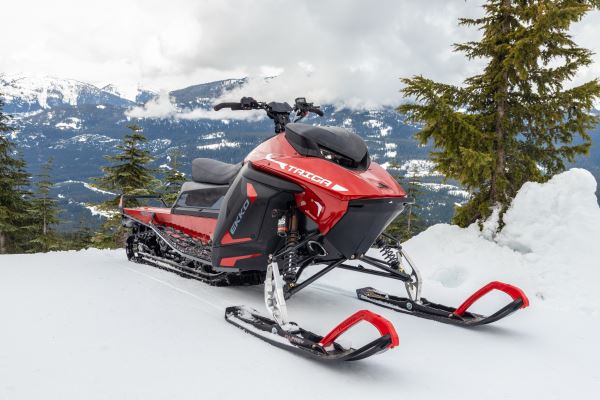
Over a decade ago, three university engineering students working on a project that converted automobiles from gas to electric decided it would be fun to try to apply what they were doing to a snowmobile.
Sam Bruneau, Gabriel Bernatchez and Paul Achard were actually competing with other university teams by building small Formula One race cars.
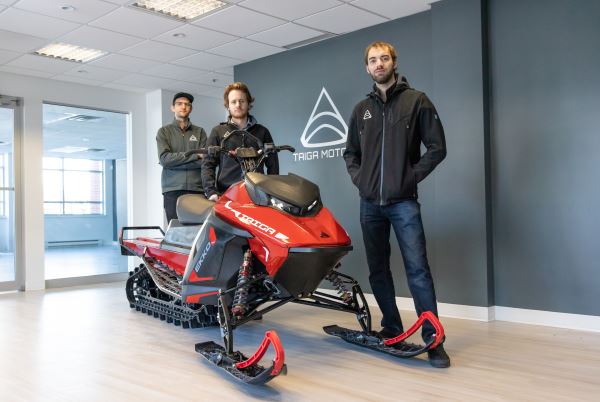
But winters in Canada can be long and cold … so the three passionate engineers (who were also passionate snowmobilers) decided to convert a combustion engine snowmobile over to electric power.
At first it was more for the challenge. As their designs improved, it evolved into fun. Soon word started spreading and more people became interested—local media were asking about it. Then a few inquiries started coming in from ski resorts. Almost immediately requests were flooding in from everywhere. The three young engineers realized they actually might be onto something big.
Perhaps what tipped the scales was when an indoor ski hill in Brazil called and asked if the three could “electrify” its fleet of snowmobiles.
So in 2015, the three created Taiga Motors, a Montreal-based company, and were off on their quest to transform the snowmobile industry.
SnoWest Magazine also got wind of Taiga Motors effort to convert a snowmobile to electric power. At first, it sounded more like a novelty concept. After all, extension cords aren’t that long and it would take a boat-load of Double As to deliver enough juice to power through deep snow.
But after we took some time to actually see how far the technology has come, we realized that there may be a lot more to this thing than initially thought.
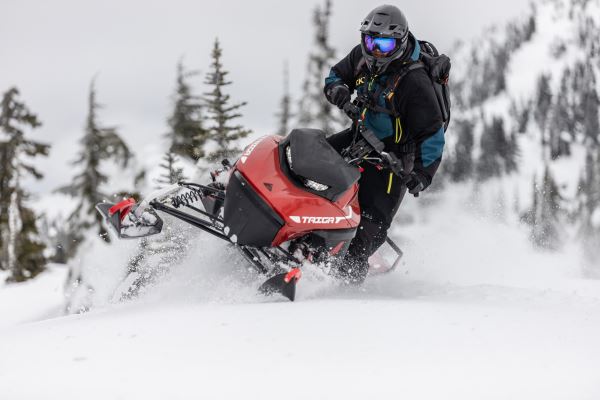
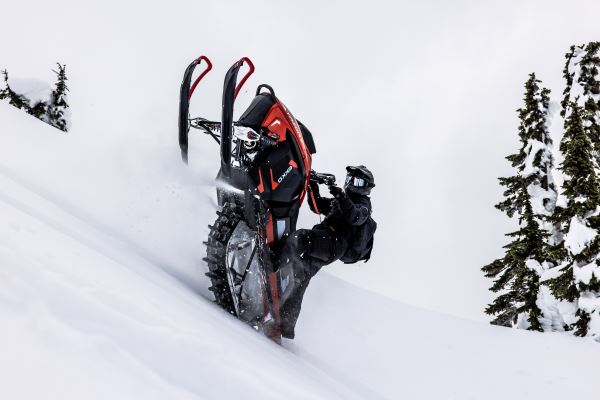

During a recent exclusive interview with Taiga Motors CEO Sam Bruneau via Zoom, we were able to get a little better insight as to the transition from a college experiment to a promising business with major investors.
Although when the three young engineers designed their first electric snowmobile, just to see if they could, they soon noticed the entire snowmobiling experience seemed to be different.
“After having ridden the electric snowmobile for several years, we kind of forgot what it was like to ride a gas snowmobile,” Bruneau said. “It was like, wow, the experience is just so different, and we thought so much more enjoyable on the electric one, so much more approachable.”
Bruneau said due to the uniqueness of the riding experience the three thought this concept could really have a big impact on the winter recreation industry. They wanted to get this out there because it is such a great product.
In 2015 Taiga Motors was created. And for the past six years the company has focused its R&D efforts in snowmobile design and powertrain technology.
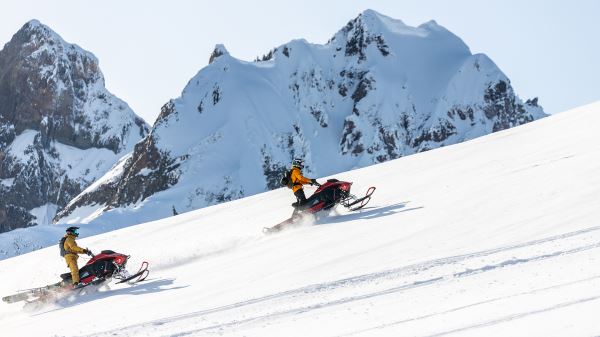
Plans Change Quickly
Although Taiga Motors set a goal of mass distribution of electric snowmobiles for the fall of 2020, Covid-19 rocked the world and set everything back. This gave this young company a chance to get a few more hand-built models on the snow to allow more refinements to the design.
“I think Covid set (our timeline) back a bit initially,” Bruneau explained. “But we were able to build a pilot line this past winter. So we were able to do three units a day.”
This also gave Taiga a chance to get better situated with its production capabilities and marketing opportunities.

“We’ve been out across Eastern Canada, Western Canada, and we were just recently in Colorado doing a lot of demos with different customers,” he said. “So yeah, we were pushed back initially by Covid. But then there was resurgence in demand (for recreational vehicles) in the later half of 2020 that kind of fueled some bigger investment rounds at Taiga. That ultimately allowed being able to take Taiga public and raise significant funding to be able to really ramp up for production.”
This fall Taiga plans to produce over 1,000 units with a large percentage of the electric snowmobiles going to commercial partners like fleet operators and ski resorts. However, Bruneau said there will still be some units available for recreational riders.
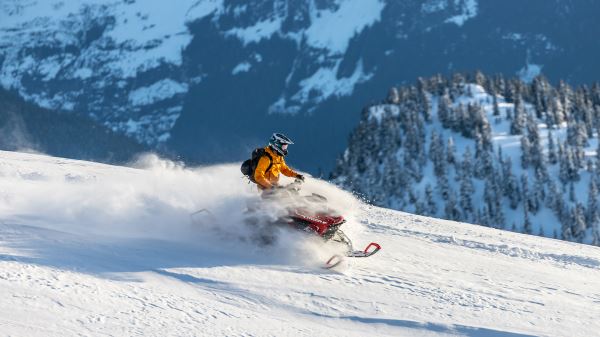
Evolving Technology
During the course of development, the Taiga electric snowmobile has experienced three major changes in its platform. The current TS3 platform (Taiga Snow 3) reflects a platform built from the ground up to function on battery power.
Bruneau said that unlike the gas engine, the electric motor doesn’t have certain restrictions commonly associated with snowmobiles. For example, the drive train doesn’t require clutches to convert the power to the snow. So there’s no rotating mass (clutches) on one side of the sled and an elaborate exhaust system on the other side. You don’t have to worry about engine cooling or over-heating.
“Our assembled platforms have been designed completely from the ground up to be very unique to the electric powertrain,” he said. “We don't have the same constraints as the combustion engine.”
The skis, suspension and track are common denominators with both gas and electric snowmobiles. The real trick is to get the power to the track under the restraints of motor performance, batter efficiency and vehicle weight.
“So we’ve done a lot of development on making sure all of these work really well together,” Bruneau said. “And we’ve engineered the battery pack really from the ground up—basically, how we can put the most batteries in there while still remaining competitive in a weight and offering a ride quality that is at least equal or better to some comparable combustion units in their segments.”
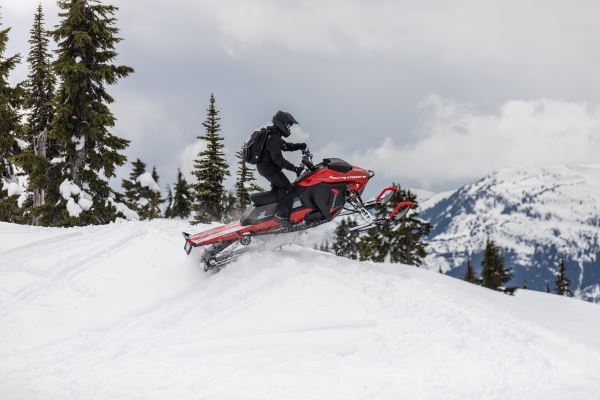
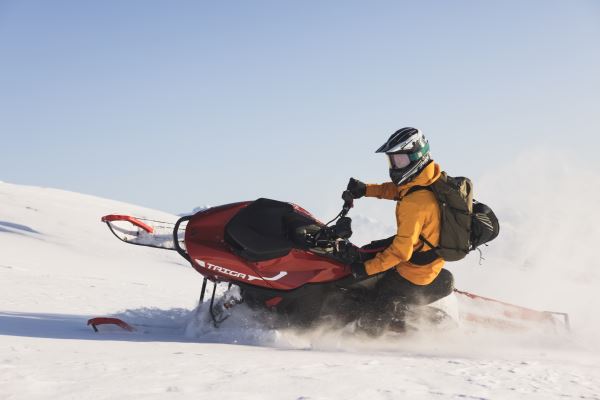
Riders Experience
Although the snowmobile powerplant may be unique, the snowmobiling experience has to be similar.
“I think what makes snowmobiling so great is the passionate riders that want a high performing product and aren’t afraid to use it,” Bruneau explained. “You know, this is not a Ferrari that is parked in a nice looking garage.”
Although snowmobilers may custom wrap their sleds and keep them nice and clean, once they are on the snow, they’re blasting through moguls, twisting through trees and dropping off cornices.
Bruneau said the Taiga engineers design the snowmobiles, then take them out on the snow and ride them hard and but them through field tests to make certain the design is both functional and durable.
“We’ve been out every winter testing with different riders who are not afraid to break a lot of snowmobile prototypes,” he said. “It’s how do we use this on a day-to-day for real, and we run into trees, we roll these down some pretty steep hills. We really abuse them to make sure that we’re engineering the product to be able to withstand (extreme riders).”
One of the goals at Taiga is to make a snowmobile that can handle the day-to-day abuse on the snow while requiring little or no maintenance. There are no clutches to tune or fluids to maintain. You merely plug it in at the end of the day and you’re ready to go tomorrow.
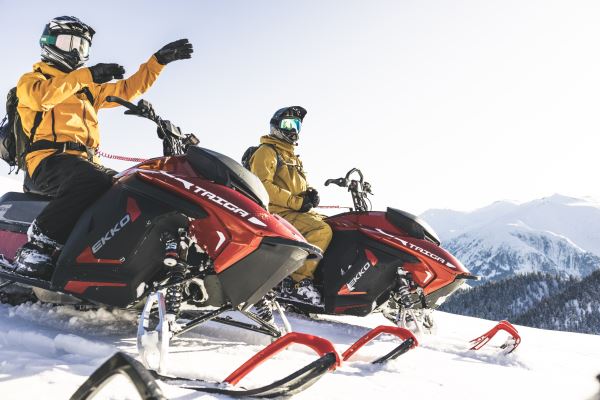
From Tuning To Programming
With no clutches, no carburetion, no fuel maps and no heat sensors, the concept of tuning takes on an entirely different meaning.
“So the magic of electric is direct coupling to the track,” Bruneau explained. “You have a very predictable ride. You have instant torque available throughout the rpm band. So you don’t need any shifting. It’s very predictable because how you press the throttle is exactly how the vehicle is going to react.”
The magic is really in the software. With the Taiga electric snowmobile, you can adjust the performance parameters—how you want your sled to perform for different snow conditions. You can have a much lower calibrated throttle, or you can have a much heavier throttle with a much faster response if you are in deeper snow conditions.
“It is amazing,” Bruneau explained. “It gives riders the ability to adjust and you can save each profile. You can really tune the machine to how you like to ride it. So maybe you are a certain type of rider in the deep snow, you ride a lot in some unique conditions. You can adjust all these parameters and then you can save it for yourself to use in these conditions at another time. And you can just activate that when you want.”
Bruneau said the Taiga allows you to make these adjustments either on the snowmobile’s gauge or on your smart phone. And these adjustments can be quickly made in the field.
“It is an electronic throttle,” he explained. “So you read the position of the throttle with a sensor, and that gets sent to the onboard computer, the vehicle controller. We call that the torque request that gets sent to the motor. So depending on how you tuned it, a different torque request is sent to the motor, and then the motor really ramps up to meet that torque request.”
No more tuning clutches. No more guessing for backshifting, different engagement points, helix angles, spring rates or clutch weights.
“I think a lot of people spend time tuning their CVT system to achieve the maximum performance,” Bruneau said. “Now you don’t have to touch anything mechanically. You can do all that from your phone. You can do all of that digitally now, and it takes you a few seconds instead of a few hours.”
Plug & Play
The two common questions asked are: How do you charge your battery and how long does the charge last?
“The vehicle comes with a charging cable that you can plug directly into any wall outlet,” Bruneau said. “So that is the easiest way of charging. And that’s really more of an overnight charge process. I’d say about a 10 hour charge. So if you are using it throughout the day, you come back at home and just plug it in on a standard outlet and be ready to go the next day.”
But that’s only one option of charging—Level 1. There are two other levels of charging. Level 2 is charged off a 240 volt power source such as a dryer plug-in. That takes about two hours to fully charge your battery. Level 3 is designed to use the charging station design available for electric cars where you can acquire an 80 percent charge in about 20 minutes.
Driving range will vary depending the on the size of motor (Taiga offers three power packages—65kw (90 hp), 90kw (120 ph) and 135kw (180 hp)—and snow conditions. Predicted driving range is between 60-80 miles. Taiga also offers three models—the Atlas (crossover sled), Nomad (utility and touring sled) and Ekko (the mountain sled).
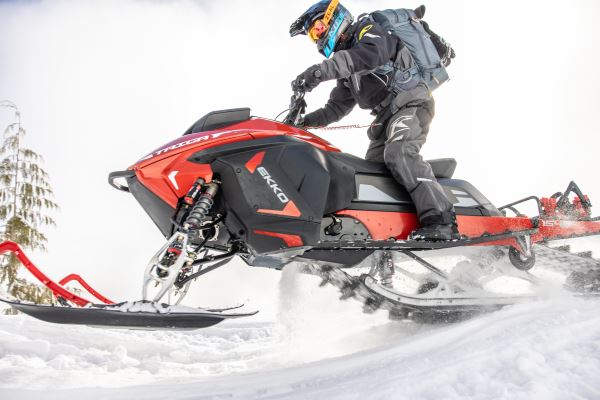
Odds & Ends
We asked about whether there’s an issue with wet sticky snow binding the track (you know … the kind of snow that’s notorious for burning belts)?
“There is so much torque that typically you can break out of anything,” Bruneau explained. “But maybe you get some ice in there, or a branch or something (that seizes the track). We actually have a mechanism on the vehicle that will warn you if there is something blocking the track.”
We noticed similarities in the Taiga’s design that resembles other makes of snowmobiles. Was this happenstance or have you collaborated with any other manufacturer?
“We get some comments on similarities with other manufacturers,” he said. “It’s funny because some say we are similar to Polaris, others say we are similar to Arctic Cat or Ski-Doo. I think just by being a new manufacturer, people are used to recognizing certain traits that had been common in snowmobiles for a long time. Actually, it’s really a clean sheet design.”
Taiga does share a few common parts, such as Camoplast tracks, skis and suspension components that all manufactures tend to share. But Bruneau said all of the body and chassis parts have been designed by Taiga.
Finally, we were curious to the distribution line and when the Taiga electric snowmobile would be readily available to consumers.
“It’s definitely easier to start deliveries with commercial partners first, you don’t need as big a distribution network,” he explained. “But we are actually working with several established dealers at the moment (for the consumer side).”
For now, Taiga Motors is operating on a smaller scale production—sort of walking before you run. Up till now Taiga Motors has had a mini assembly line going with a limited production staff. But as funding improves, production continues to grow.
“We have built a more full-fledged assembly line, something that is still not the full scale of what BRP or Arctic Cat has at the moment, but that is something that we are ramping up to,” he said. “We just announced a new production facility to be built in late 2022. When it’s completed we have a capacity up to 60,000 vehicles a year.”
Finally, the two big questions are price and weight.
Depending on the model (and motor package), Taiga will be priced between $15,000-$17,000. The weight comes in 600 pounds. Both are very comparable to market prices and weight weights of current performance snowmobiles.
Advantages of Electric
Here are some definite advantages of an electric snowmobile.
1) Programmability. The power is always constant. You decide how you want it applied through the throttle control.
2) Elevation doesn’t matter. You have the same horsepower at sea level as you would have on the moon (if you could just first break through the earth’s gravitational pull).
3) No over-heating. You are not dependant of snow to cool fluids running through your engine since you have no fluids … and you have no engine. You now have a motor.
4) No concerns of octane levels or moisture in your gas. You have no gas, no oil, no anti-freeze. But you still have plenty of juice.
5) No pre-season/post-season maintenance. In fact, you now have minimal maintenance.
6) Finally, noise. What noise? Electric is much quieter, no exhaust fumes. Now you can sneak out at night and the wife or neighbors won’t hear you going or returning.
Previous Story
Shhhh, Can You Hear It? Taiga Unveils Electric Snowmobiles For Production | SnoWest Magazine
